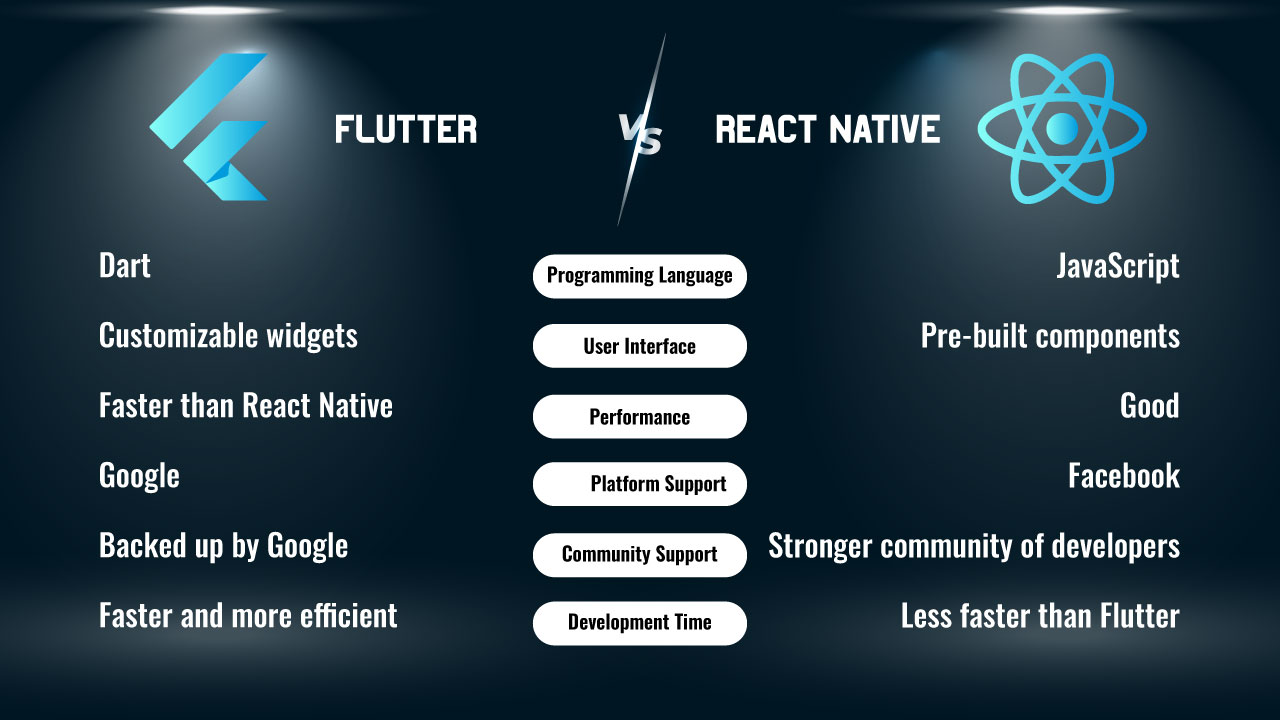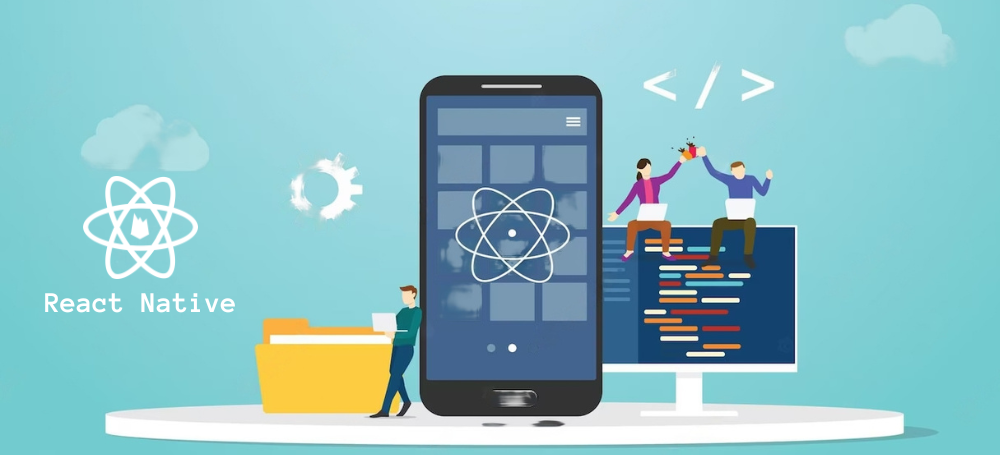
Mobile app development has become a highly competitive and evolving space. With so many frameworks to choose from, it can be challenging to determine which one is the best fit for your project. In this article, we’ll take a detailed look at two of the most popular mobile app development frameworks, Flutter and React Native, and compare their programming language, User Interface, Performance, platform support, community support as well as Development Time to help you make an informed decision.
Which Programming Language does Flutter and React Native use?
- Flutter uses Dart, a relatively new programming language that is easy to learn and use. Dart is an object-oriented language with syntax that is similar to other popular languages like Java and JavaScript.
- React Native uses JavaScript, a widely popular programming language used by millions of developers worldwide. JavaScript is a dynamic language that is easy to learn and offers a lot of flexibility.
What does Flutter and React Native use for User Interface
- Flutter offers a wide range of customizable widgets, which makes it easy to create beautiful and responsive user interfaces. Flutter’s widgets are designed to look and feel like native components, giving your app a polished and professional look.
- React Native also provides a lot of pre-built components, which makes it easy to create user interfaces. However, its UI components are not as customizable as Flutter’s, which may limit your design choices.

Which has better Performance, Flutter or React Native?
- Flutter’s performance is faster than React Native’s because it uses a compiled programming language (Dart) instead of interpreted JavaScript. Flutter apps have faster startup times and are generally smoother than React Native apps.
- React Native’s performance is good, but it may suffer from performance issues if you are not careful with your code. Additionally, React Native’s JavaScript runtime can impact the performance of your app.
Which platform does Flutter and React Native Support?
- Flutter is a relatively new framework that was launched in 2017 by Google. It supports both Android and iOS platforms, as well as web and desktop platforms. Flutter provides a high-performance experience across platforms, and its widgets can be customized to create native-like experiences.

- React Native, on the other hand, was launched in 2015 by Facebook. It supports both iOS and Android platforms and allows developers to reuse code across platforms. Although React Native is primarily focused on mobile app development, it also has support for web and desktop platforms.
Whose Community Support is better, Flutter or React Native?
- Both Flutter and React Native have large and active communities of developers. The Flutter community is still growing, but it has a strong backing from Google, which ensures continued development and support. Flutter also has a vast library of widgets and plugins that are contributed by the community.
- React Native has been around for longer and has a more established community of developers. It has a vast ecosystem of libraries, plugins, and tools, and a strong community that supports developers with regular updates and new features.
What is the development time difference between Flutter and React Native?
- Flutter’s hot reload feature allows developers to see the results of code changes almost instantly, making the development process faster and more efficient. Additionally, Flutter’s widget-based approach can make it easier to create complex UIs, reducing development time.
- React Native also has a fast development cycle, but it may take longer to develop complex UIs due to its limited customization options.
Conclusion:
Choosing between Flutter and React Native ultimately comes down to your project’s specific requirements. Ultimately, both frameworks have their Pros and cons, and choosing the right one comes down to your project’s specific needs.